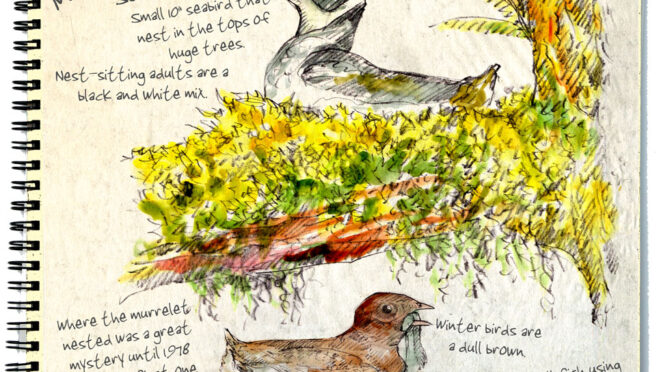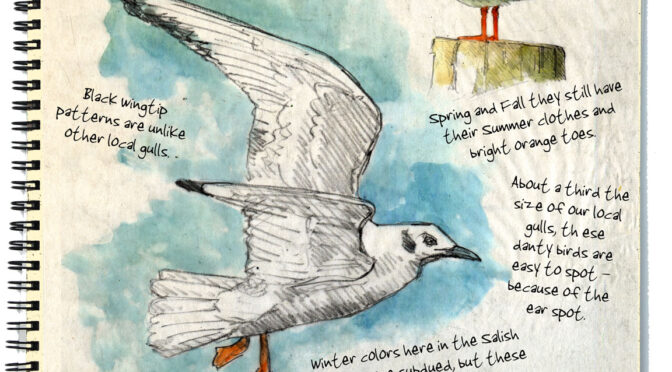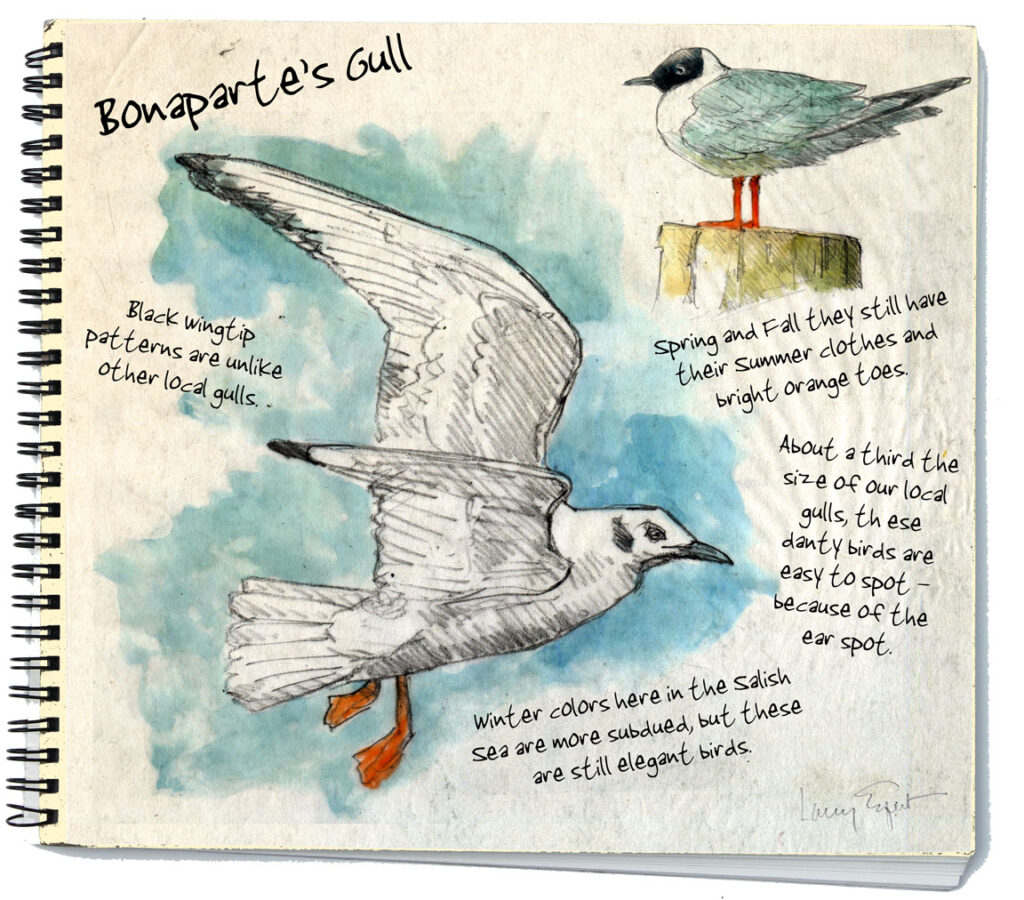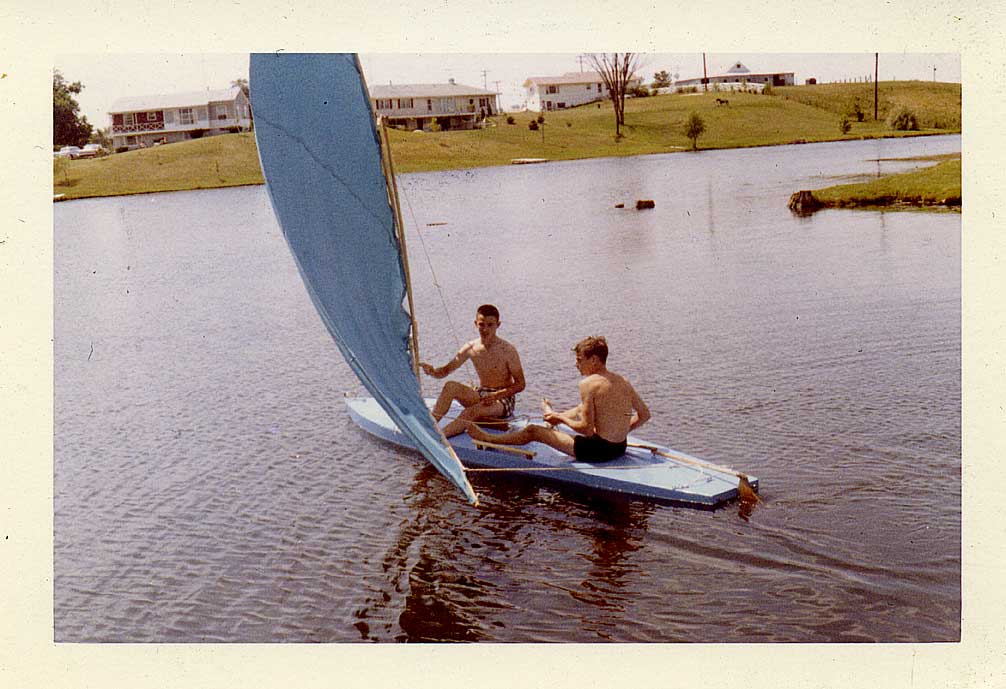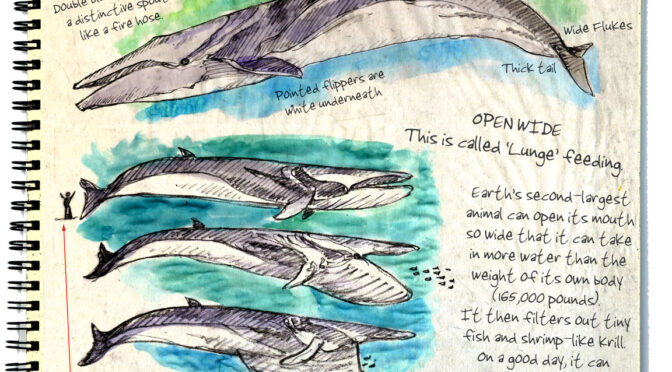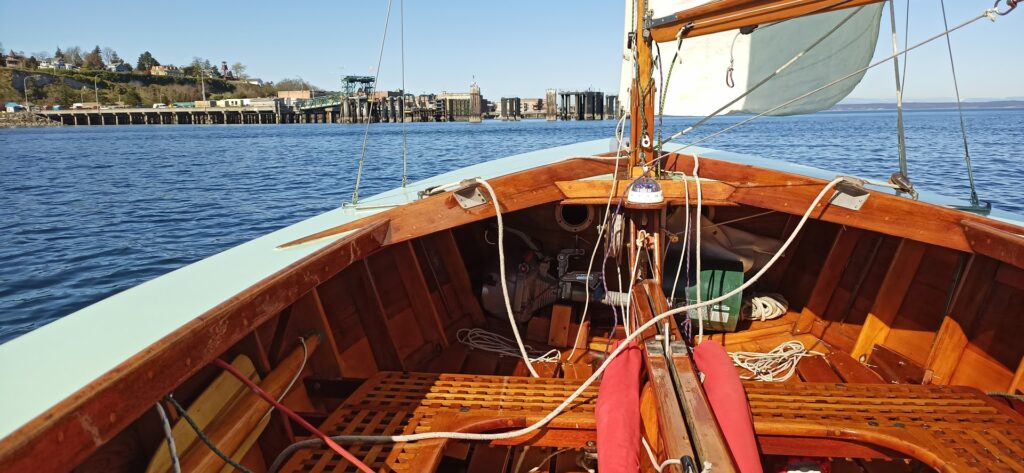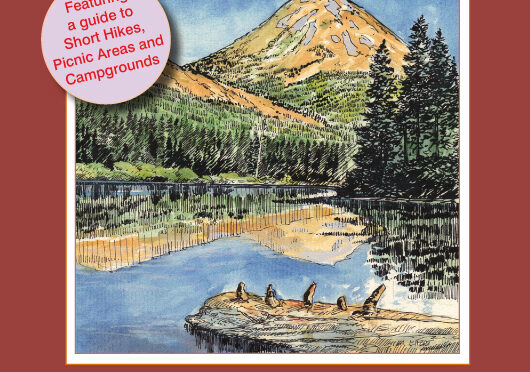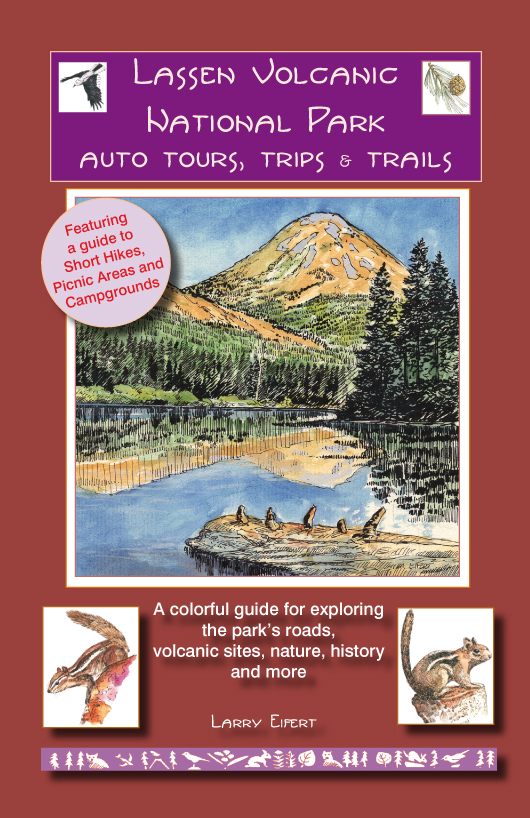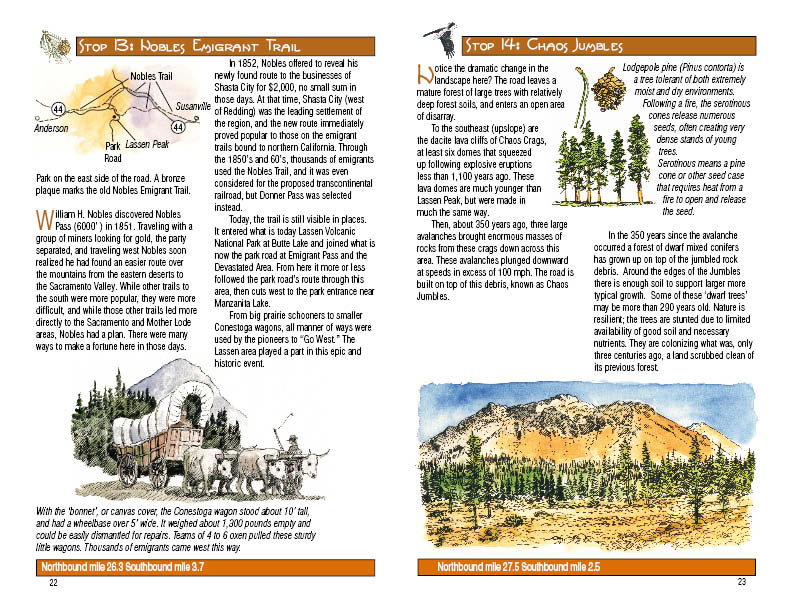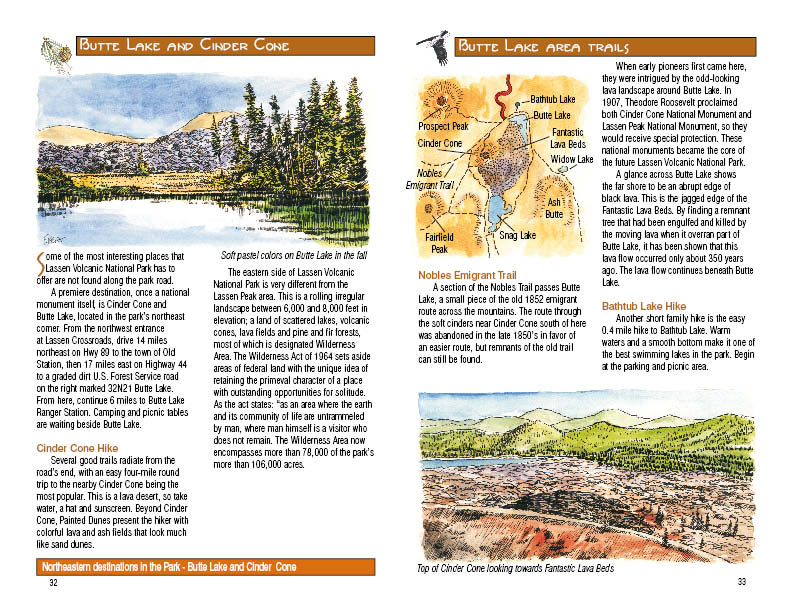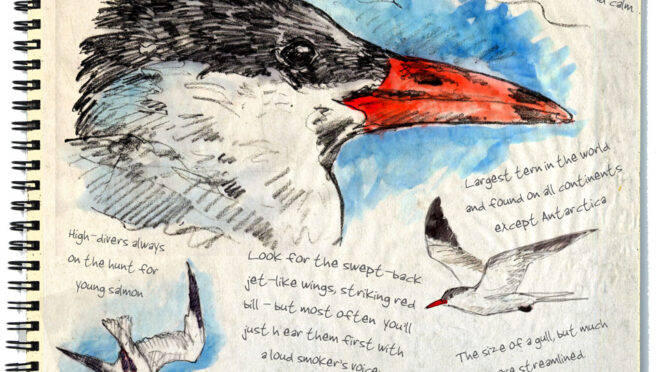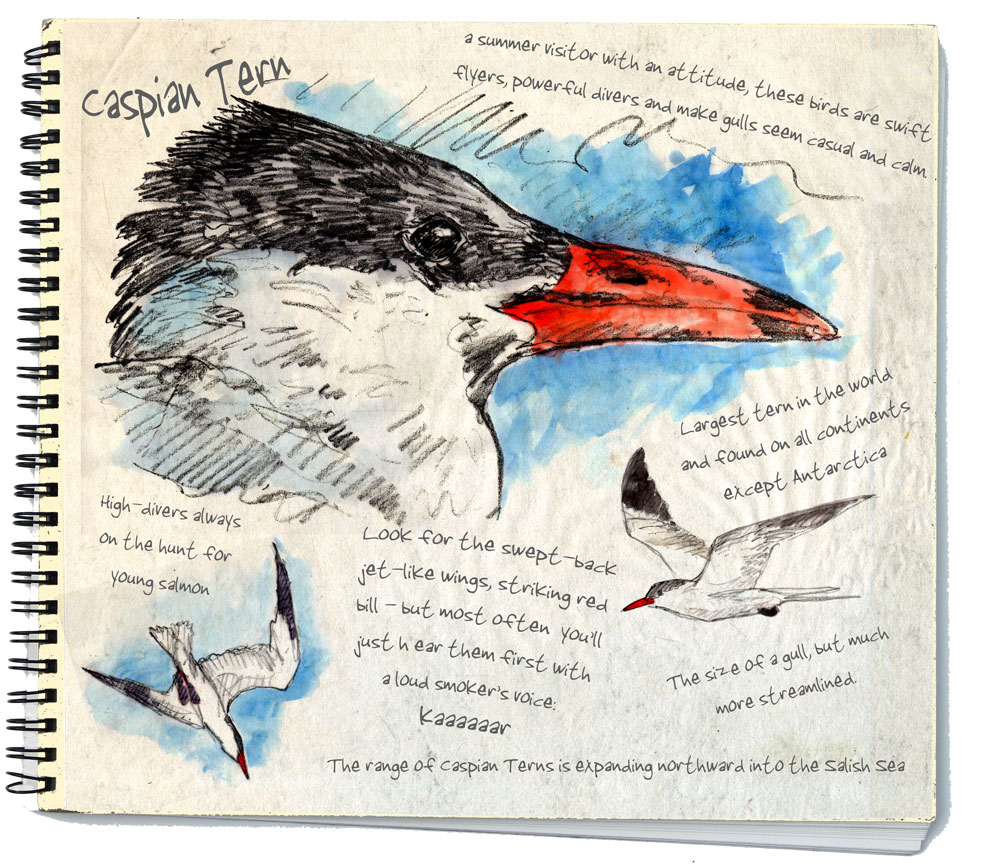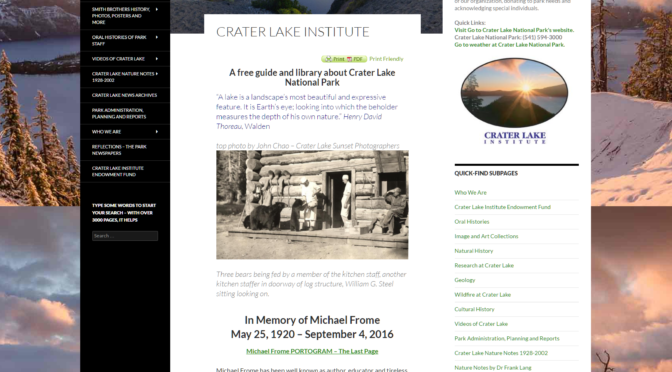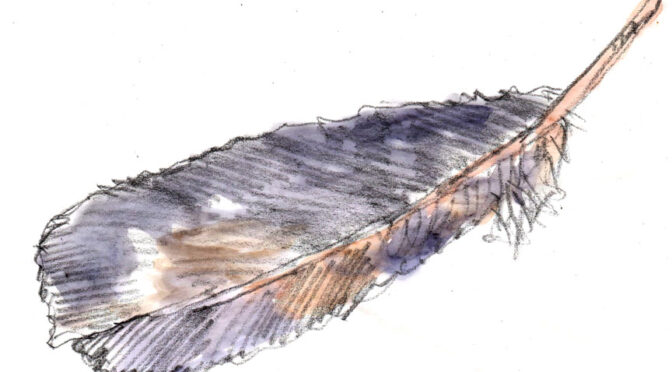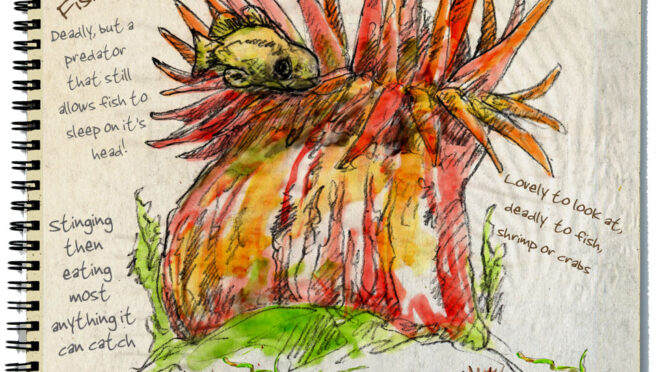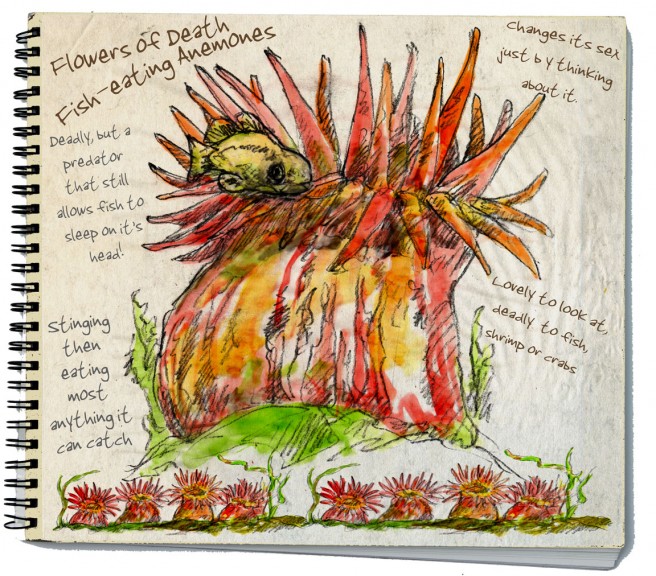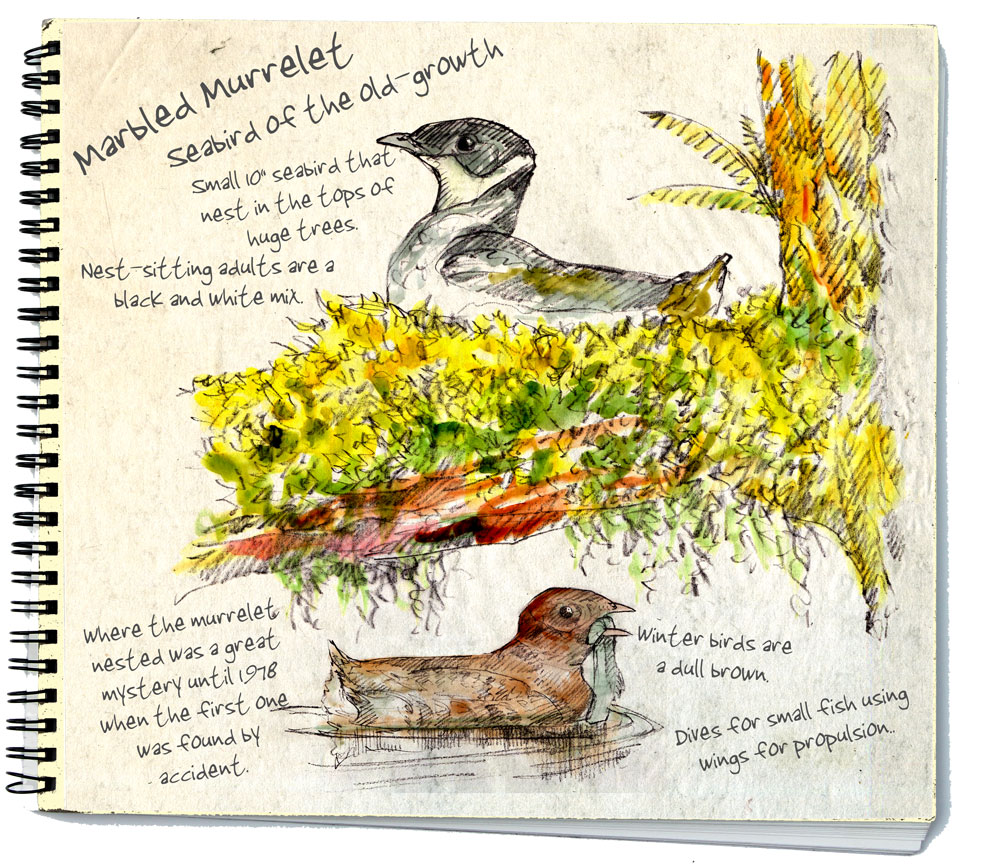
Somehow, I managed to meld together two of my favorites into one article this month in 48North magazine – nature and sailing. Here’s the story:
I’ve watched marbled murrelets for decades, learned their recognizable upturned heads as they slipped past the boat. I also remember the “big mystery” over 40 years ago; no one knew where the murrelet nested. Sure, there were birds seen in the ocean from California to Alaska and throughout the Salish Sea, but no nests were ever found even after a reward was offered. Then in 1974, a tree trimmer stumbled on a downy chick high in an old-growth Douglas-fir. Loggers had seen them, called them ‘fog larks’, but loggers and ornithologists somehow never got together to talk about all this. It turned out the murrelet liked, no, required old-growth forests. They need giant trees with big branches and mossy limbs. So, this football-shaped small 10” seabird soon became center stage in a giant battle between the tree-cutting corporations and environmentalists who realized the bird was doomed if all the big legacy trees were cut. In 1992, the murrelet was Federally listed under the Endangered Species Act as a threatened species.
While most of the old trees are now either protected or gone forever, it appears the bird’s numbers are still declining. This may be because murrelets usually produce one chick every other year. Parents trade nest-sitting duties and adults take turns flying to and from the ocean with a single fish – mostly at dusk and dawn. Youngsters molt into juvenile feathers before leaving the nest, and when the time is right, they simply step off the nest and learn to fly on the way down. If successful, they make their way, unaided, to the ocean. Now, if there was ever a single moment where a species needed a reality check, I think it might be right here. Let’s say you are a little bird the size of a robin that’s never been anywhere. You’re sitting in a tree several hundred feet off the ground. You’re in Mount Rainier National Park and you can’t even SEE the ocean – and yet one day you jump off the nest into thin air. Just saying!
Larry Eifert paints and blogs about wild places at larryeifert.com. His art can be seen in many national parks across America.
And here’s the other ‘favorite’ in my life.

Thanks for reading this week.
Larry Eifert
Here’s the blog on the web. And here’s my Facebook fan page. I post lots of other stuff there.
Click here to go to our main website – with jigsaw puzzles, prints, interpretive portfolios and lots of other stuff.
Nancy’s web portfolio of stunning photography
And here to go to Virginia Eifert’s website. Her books are now becoming available as Amazon Kindle books.
